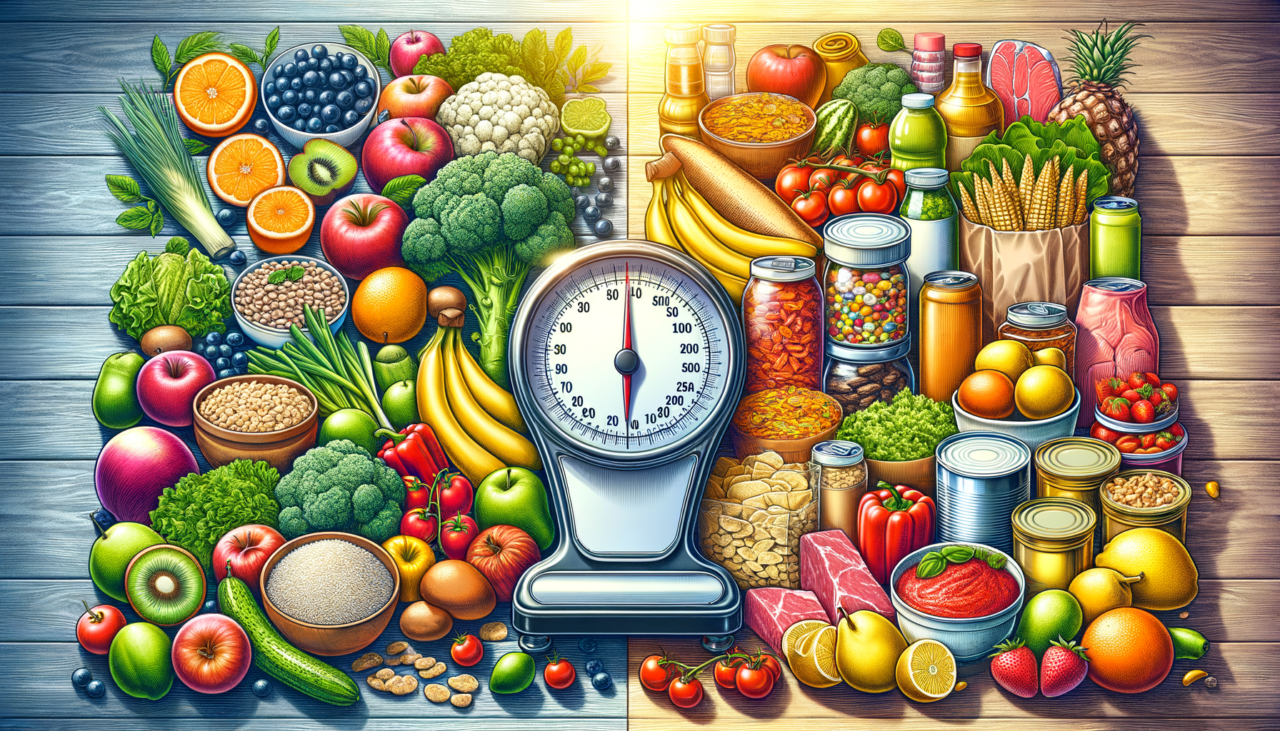In today’s fast-paced world, the choices we make about our diet can have profound impacts on our health and well-being. Two contrasting dietary approaches have gained significant attention: the Whole Foods Diet and the Processed Foods Diet. Understanding the nuances of these diets can guide you towards making healthier lifestyle choices. In this article, we’ll delve into the characteristics of each diet, explore their benefits and drawbacks, and present a comparative table to help you decide which might be the best fit for you.
Understanding Whole Foods Diet
Imagine a lush garden, vibrant with fresh fruits and vegetables, where each bite delivers pure nutrients and unadulterated flavors. That’s the essence of a Whole Foods Diet. This dietary approach emphasizes the consumption of foods in their natural state—unprocessed and unrefined. Here are the key characteristics:
- Nutrient Density: Whole foods are rich in essential vitamins, minerals, and antioxidants, providing complete nutrition.
- Natural Fiber: Abundant in dietary fiber, whole foods aid digestion and promote a healthy gut.
- Low Additives: With minimal preservatives and artificial flavors, whole foods are free from potentially harmful chemicals.
- Sustainability: Often locally and organically sourced, whole foods support sustainable farming practices.
Exploring Processed Foods Diet
Now, picture a bustling city filled with neon lights and fast-food joints at every corner. The Processed Foods Diet is akin to this urban landscape—convenient, accessible, and diverse. Here are its defining traits:
- Convenience: Processed foods are often pre-packaged and ready-to-eat, fitting seamlessly into busy lifestyles.
- Extended Shelf Life: Through preservatives and additives, processed foods have a longer shelf life.
- Flavor Enhancement: Artificial flavors and sweeteners enhance taste, making these foods highly palatable.
- Affordability: Generally cheaper than whole foods, processed options are budget-friendly.
Comparative Table
Let’s break down the main points of comparison between the Whole Foods Diet and the Processed Foods Diet:
| Aspect | Whole Foods Diet | Processed Foods Diet |
|---|---|---|
| Nutritional Value | High in nutrients, vitamins, and fiber | Often low in essential nutrients |
| Additives | Minimal to none | High in preservatives and additives |
| Taste | Natural and fresh | Enhanced with artificial flavors |
| Preparation Time | Requires time for preparation | Quick and easy |
| Health Impact | Supports long-term health benefits | Linked to increased health risks |
| Cost | Can be more expensive | Generally more affordable |
| Environmental Impact | Lower carbon footprint | Higher carbon footprint |
| Sustainability | Promotes sustainable practices | Often less sustainable |
Benefits of Whole Foods Diet
The Whole Foods Diet is celebrated for its numerous health benefits. It supports weight management, reduces the risk of chronic diseases, and enhances overall well-being. By focusing on natural ingredients, this diet helps maintain stable energy levels and improves mental clarity. Additionally, embracing whole foods often leads to a more mindful eating experience, encouraging individuals to savor and appreciate each meal.
Drawbacks of Processed Foods Diet
While the convenience of processed foods is undeniable, it comes with potential drawbacks. High consumption of processed foods is linked to obesity, heart disease, and diabetes. The excessive presence of sodium, sugar, and unhealthy fats can lead to various health issues over time. Moreover, the environmental impact of mass-produced processed foods raises concerns about sustainability and ecological balance.
Conclusion
Choosing between a Whole Foods Diet and a Processed Foods Diet depends on individual lifestyle, health goals, and personal preferences. While whole foods offer undeniable health benefits and a sustainable approach, processed foods cater to convenience and affordability. Striking a balance between these two dietary paths can lead to a healthier, more fulfilling life.
For a visual representation of these comparisons, we’ve created an infographic that distills this information into an easy-to-understand format. Whether you’re a health enthusiast or someone seeking dietary change, understanding these differences empowers you to make informed decisions. Remember, the path to wellness is a journey, and every small step counts.
Call to Action: Explore more detailed comparisons and reviews on CompareAnything.org, where we help you make informed choices for a healthier, happier life.

Comments (0)
There are no comments here yet, you can be the first!